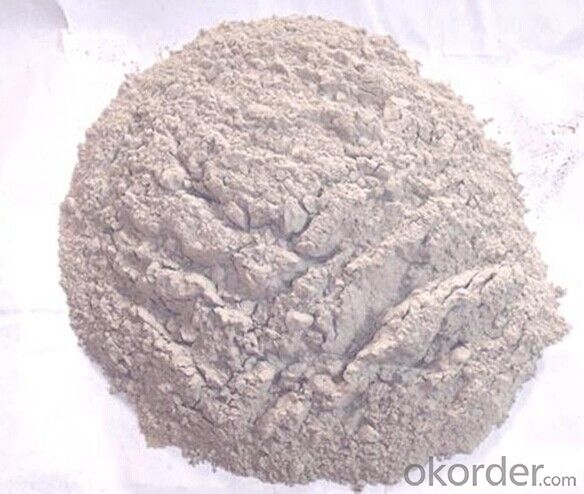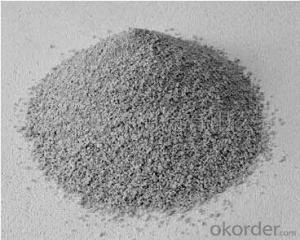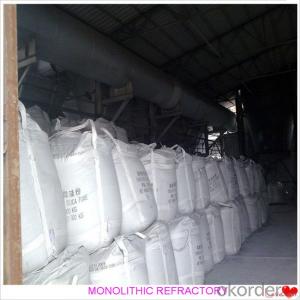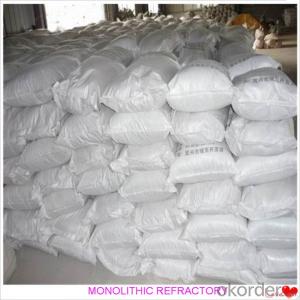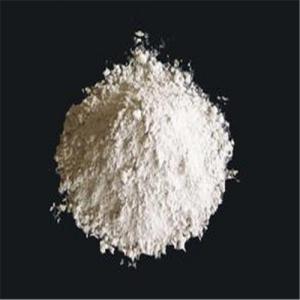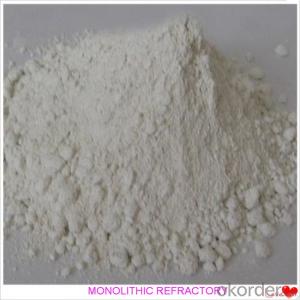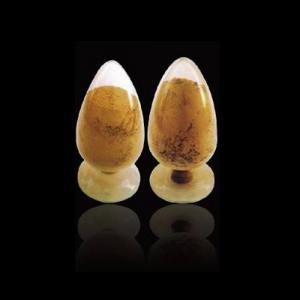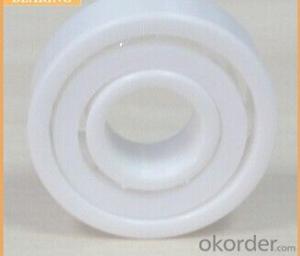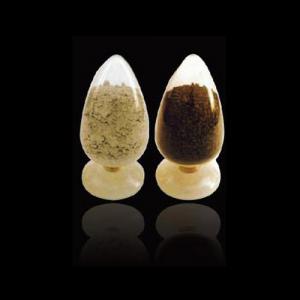Monolithic Refractories for Iron and Steel Industry:Lightweight Heat Insulating Castable
- Loading Port:
- China Main Port
- Payment Terms:
- TT OR LC
- Min Order Qty:
- -
- Supply Capability:
- -
OKorder Service Pledge
OKorder Financial Service
You Might Also Like
Specifications
insulating castable refractory
1.high strength
2.high service temperature
3.good thermal shock resistance
This Low Density Castable have the characteristics as below:
1 Low density
2 High Strength
3 Good acid resistance
4 Good alkali resistance
Low Density castable Application:
It is suitable for middle and low temperature furnace linings,ceiling and mobile cover.
Main Physical and Chemical Characteristics
Name | Light Corundum mullite castable | Light Floating Bead Ceramisite Castable | Light alkali-resisting castable | Super-light castable | ||||
NO. | CB-10 | CB-13 | QJ-120 | QJ-80 | CQ-12D | CQ-13D | CQ-450 | |
Bulk Density(110°Cdried) | 1.0 | 1.3 | 1.2 | 0.8 | 1.5 | 1.7 | 0.45 | |
Temperature of linear change is no more than 1.5% after3h in the constant Temp.(°C) | 1500 | 1450 | 1200 | 1000 | 1200 | 1300 | 950 | |
Cold Crushing strength(Mpa) | 110°C dried | 7.5 | 8 | 7.8 | 7.2 | 35 | 40 | 5.5 |
1000°C×3h | 30 | 30 | 12.5 | 12 | 30 | 35 | 6.5 | |
Heat Conductivity W/m.k | 0.35 | 0.35 | 0.31 | 0.26 | 0.26 | 0.35 | 0.26 | |
Index of thermal expansion 1000°C % | 0.55 | 0.65 | 0.75 | 0.40 | 0.40 | 0.40 | 0.20 | |
Max working temperature°C | 1450 | 1500 | 1350 | 1250 | 1300 | 1300 | 980 | |
Al2O3% | >70 | >65 | >30 | >30 | >35 | >40 | >35 | |
SiO2% | <22 | <25 | <45 | <45 | <50 | <45 | <55 | |
- Q: How does the composition of monolithic refractories impact their performance?
- The composition of monolithic refractories greatly impacts their performance. The choice of raw materials, such as aggregates, binders, and additives, determines the refractory's properties, such as strength, thermal conductivity, chemical resistance, and thermal expansion. The correct composition ensures that the refractory can withstand high temperatures, resist corrosion, and maintain its structural integrity even under severe conditions. A well-designed composition also improves the refractory's workability and ease of installation, allowing for efficient and effective lining applications.
- Q: How do monolithic refractories improve the efficiency of reheating furnaces in steel plants?
- The efficiency of reheating furnaces in steel plants is greatly improved by the use of monolithic refractories. Specifically designed to withstand high temperatures and harsh conditions, these refractories are an ideal choice for steel plants. One important way in which monolithic refractories enhance furnace efficiency is by decreasing heat loss. With their excellent insulation properties, these refractories minimize the transfer of heat from the furnace to its surroundings. As a result, less energy is wasted and the furnace can maintain its desired temperature more effectively. Furthermore, monolithic refractories contribute to a more uniform and controlled distribution of heat within the furnace. They can be easily shaped and installed to create a seamless lining, ensuring that heat is evenly spread throughout the furnace chamber. This even distribution of heat eliminates any hotspots or cold spots, resulting in a more efficient heating process. Another crucial role of monolithic refractories is reducing downtime and maintenance requirements. Unlike traditional brick linings, which are prone to cracking and erosion, monolithic refractories offer superior resistance to wear and tear. This increased durability reduces the need for frequent repairs and replacements, allowing for uninterrupted furnace operation and increased overall efficiency. Moreover, monolithic refractories help improve energy efficiency by decreasing fuel consumption. The superior insulation properties of these refractories help retain heat within the furnace, reducing the amount of energy needed to maintain the desired temperature. This leads to significant energy savings for steel plants, as less fuel is required to achieve the same heating results. In conclusion, the efficiency of reheating furnaces in steel plants is significantly enhanced by the use of monolithic refractories. These refractories reduce heat loss, ensure uniform heat distribution, minimize downtime and maintenance, and decrease fuel consumption. By incorporating these refractories into their furnace linings, steel plants can increase productivity, reduce energy costs, and improve overall operational efficiency.
- Q: How do monolithic refractories contribute to reducing emissions in iron and steel processes?
- Monolithic refractories play a crucial role in reducing emissions in iron and steel processes by providing superior insulation, increased energy efficiency, and improved control over the production process. These refractories are designed to withstand extreme temperatures and harsh conditions, effectively minimizing heat loss and reducing the need for excessive fuel consumption. By creating a highly insulated environment, monolithic refractories enable better temperature control, leading to optimized combustion and reduced emissions of greenhouse gases. Additionally, their high resistance to wear and corrosion helps prevent the formation of pollutants, thereby contributing to a cleaner and more sustainable iron and steel industry.
- Q: What are the advantages of using insulating castables in the iron and steel industry?
- There are several advantages of using insulating castables in the iron and steel industry. Firstly, insulating castables provide excellent thermal insulation. They have low thermal conductivity, which helps to minimize heat loss from the furnaces and other equipment. This is particularly important in the iron and steel industry, where high temperatures are required for various processes. The insulation provided by castables helps to maintain a stable temperature within the furnace, resulting in improved energy efficiency and reduced fuel consumption. Secondly, insulating castables have high strength and excellent resistance to thermal shock. This is crucial in the iron and steel industry, where extreme temperature changes are common. The castables can withstand rapid heating and cooling cycles without cracking or compromising their structural integrity. This ensures the longevity and durability of the refractory lining, reducing the need for frequent maintenance and repairs. Furthermore, insulating castables are lightweight and easy to install. Their low density makes them easier to handle and transport, resulting in reduced labor costs and shorter installation times. This is particularly advantageous in large-scale iron and steel plants, where time and cost efficiency are critical. Moreover, insulating castables offer good corrosion resistance. The harsh environment in the iron and steel industry, with the presence of molten metal, slag, and various chemicals, can cause corrosion and erosion of refractory materials. Insulating castables are designed to withstand these corrosive conditions, ensuring the longevity of the lining and minimizing the risk of downtime and production disruptions. Lastly, insulating castables are versatile and can be customized to meet specific requirements. They are available in various compositions and densities, allowing for tailored solutions to different applications within the iron and steel industry. This versatility ensures optimal performance and efficiency in various furnace and equipment designs. In conclusion, the advantages of using insulating castables in the iron and steel industry include excellent thermal insulation, high strength, resistance to thermal shock, lightweight installation, corrosion resistance, and versatility. These benefits contribute to improved energy efficiency, reduced maintenance costs, increased durability, and enhanced overall productivity in the industry.
- Q: How do monolithic refractories protect the lining of ladles and tundishes?
- Monolithic refractories protect the lining of ladles and tundishes by forming a strong and durable barrier against high temperatures, chemical reactions, and mechanical stresses. These refractories are designed to be resistant to thermal shock and erosion, ensuring that the lining remains intact and unaffected by the molten metal or slag. They also provide insulation, minimizing heat loss and reducing energy consumption. Overall, monolithic refractories act as a reliable shield, extending the lifespan of the ladles and tundishes and preventing any detrimental effects on the lining.
- Q: What are the advantages of using plastic refractories in the iron and steel industry?
- There are several advantages of using plastic refractories in the iron and steel industry. Firstly, plastic refractories have excellent thermal shock resistance, which means they can withstand rapid changes in temperature without cracking or breaking. This is crucial in the iron and steel industry where the materials are exposed to extreme heat during the manufacturing process. Secondly, plastic refractories have good workability and can be easily shaped and molded to fit various complex shapes and sizes of furnaces, ladles, and other equipment used in the industry. This makes them highly versatile and adaptable to different production requirements. Additionally, plastic refractories have excellent resistance to chemical attacks from molten metals and slags. They can withstand the corrosive nature of these materials and maintain their structural integrity, ensuring longer service life and reducing maintenance costs. Lastly, plastic refractories have good bonding properties, allowing them to adhere well to existing refractory linings. This helps to extend the lifespan of the overall refractory system and reduce the need for frequent repairs or replacements. Overall, the advantages of using plastic refractories in the iron and steel industry include thermal shock resistance, workability, chemical resistance, and good bonding properties, making them a preferred choice for lining and repairing furnaces and other equipment in this industry.
- Q: What are the specific requirements of monolithic refractories for steel ladle purging applications?
- To ensure optimal performance and durability, monolithic refractories used in steel ladle purging applications must meet certain requirements. Firstly, they need to possess high thermal stability and resistance to thermal shock, as the steelmaking process involves extreme temperatures. This is crucial in order to prevent any cracking or spalling of the refractory lining. Additionally, monolithic refractories used for ladle purging applications should exhibit excellent corrosion resistance against molten steel and slag. They must be able to withstand the aggressive chemical environment without experiencing significant deterioration, as this could lead to contamination of the steel and negatively impact its quality. Another essential requirement is good erosion resistance. The refractories should be capable of withstanding the high velocity of the purging process, which involves the injection of argon or other gases into the ladle to remove impurities. This erosion resistance ensures that the refractory lining remains intact and does not wear away during operation. Furthermore, monolithic refractories for ladle purging applications should have low porosity and high density. This prevents the infiltration of molten steel and slag into the refractory lining, thus reducing the risk of thermal spalling and corrosion. Lastly, these refractories should exhibit good thermal conductivity in order to efficiently transfer heat from the steel to the refractory lining. This allows for better temperature control and energy efficiency during the purging process. Overall, the specific requirements for monolithic refractories in steel ladle purging applications include high thermal stability, corrosion resistance, erosion resistance, low porosity, high density, and good thermal conductivity. Meeting these requirements ensures that the refractories can withstand the harsh conditions of the steelmaking process, maintain their integrity, and contribute to the production of high-quality steel.
- Q: What are the factors affecting the thermal expansion of monolithic refractories?
- The thermal expansion of monolithic refractories is influenced by several factors. These factors include the chemical composition of the refractory material, particle size, temperature, thermal history, porosity, binder content, and thermal shock. 1. The thermal expansion of the refractory material is significantly influenced by its chemical composition. Different chemical elements and compounds have varying coefficients of thermal expansion. For instance, materials with high levels of silica generally have lower coefficients of thermal expansion compared to those with higher concentrations of alumina. 2. The particle size distribution of the refractory material can also impact its thermal expansion. Smaller particle sizes result in higher thermal expansion due to increased surface area and greater particle contact. 3. The temperature at which the monolithic refractory is exposed plays a crucial role in its thermal expansion. As the temperature increases, the particles gain more kinetic energy, leading to increased movement and expansion. Different refractory materials exhibit significant expansion within specific temperature ranges. 4. The thermal history of the refractory material, including its heating and cooling cycles, can influence its thermal expansion behavior. Repeated heating and cooling cycles can induce microstructural changes in the material, affecting its thermal expansion properties. 5. The porosity of the monolithic refractory also affects its thermal expansion. Higher porosity generally results in higher thermal expansion due to the presence of voids and gaps within the material. 6. The type and amount of binder used in monolithic refractories impact their thermal expansion. Different binders have different coefficients of thermal expansion, which can influence the overall expansion behavior of the material. 7. Rapid temperature changes, such as quenching or exposure to alternating heating and cooling, can cause thermal shock in the refractory material. This can lead to cracks, spalling, and changes in thermal expansion behavior. Understanding these factors is essential when selecting the appropriate monolithic refractory material for specific applications. The thermal expansion characteristics directly affect the performance and longevity of the refractory in high-temperature environments.
- Q: What are some common applications of monolithic refractories in the iron and steel industry?
- Some common applications of monolithic refractories in the iron and steel industry include lining of ladles, tundishes, and converters, as well as repairs and maintenance of furnaces, kilns, and other high-temperature equipment. They are also used for the construction of runners, troughs, and spouts in continuous casting processes.
- Q: What are the typical applications of monolithic refractories in blast furnaces?
- Monolithic refractories are commonly used in blast furnaces for various applications, including lining the hearth, taphole, and slag line, as well as repairing cracks and erosion in the furnace lining. They are also used to create a protective barrier against high temperatures, chemical reactions, and mechanical stresses inside the blast furnace.
Send your message to us
Monolithic Refractories for Iron and Steel Industry:Lightweight Heat Insulating Castable
- Loading Port:
- China Main Port
- Payment Terms:
- TT OR LC
- Min Order Qty:
- -
- Supply Capability:
- -
OKorder Service Pledge
OKorder Financial Service
Similar products
Hot products
Hot Searches
Related keywords

